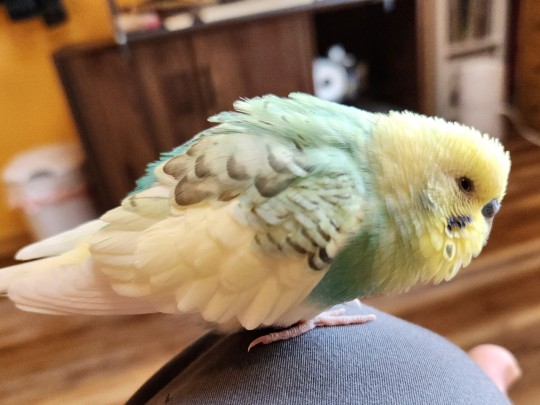Donation Based Readings ~ Open | Paypal ~ https://bit.ly/2JRUdt1 | Amazon Wishlist ~ https://amzn.to/2Deor81
Don't wanna be here? Send us removal request.
Text
12th House planets - carry a sense of dispossession ,
The presence of other people can tear the seams of identity , relating to the world as outsiders looking in
122 notes
·
View notes
Text
Hey students, here’s a pro tip: do not write an email to your prof while you’re seriously sick.
Signed, a person who somehow came up with “dear hello, I am sick and not sure if I’ll be alive to come tomorrow and I’m sorry, best slutantions, [name]”.
494K notes
·
View notes
Text
some things i’ve learned about adulthood that no one warns you about
you will in fact continue to have acne past the age of twenty
you will eventually hit a point where you start to feel icky inside if you go too long without eating some sort of vegetables
depending on your current level of athleticism/physical activity as well as the kind of activities you did as a kid/teenager, your joints may start acting whack in your twenties, despite what everyone says about that not happening until middle age
eventually you will reach a point where you wonder how you were able to stay up until 3am nearly every night and be perfectly fine the next day (and this moment will come much younger than you expect)
it is much harder to meet new people after you’re done with school than sitcoms would have you believe
don’t let society tell you shit: it is perfectly acceptable to live with your parents after you graduate, there’s no need to be broke and miserable just so you can have some misguided attempt at independence straight out of school
328K notes
·
View notes
Text
Me, plunking Stinky Bastard Man’s carrier on the counter: hi he’s here for shots and a nail trim and he’ll need to be sedated
Nurse: Are you sure? We can try-
Me: he needs to be sedated
Nurse: Well, it’ll take longer-
Me: he needs to be sedated, he will try to rip your face off
Nurse: Well we’ll try without first and we’ll let you know if we need to sedate
Me, watching her carry him away: you will need to sedate him
Nurse, coming back 10 minutes later clutching her hand: so, we will need to sedate him
Me:

250K notes
·
View notes
Text
I'm sorry, I'm still lost at the fact that their punchy grabby hand is parT OF THEIR MOUTH
There are more mantis shrimp in Heaven and Earth than are dreamt of in your philosophy
Look at this beautiful rainbow buddy. Do you recognize him?

Photo credit: me!
He's a mantis shrimp! Which, thanks to the webcomic The Oatmeal, is a pretty popular species these days. One of the most visceral descriptions in the comic was "sociopathic sea creatures that look like party clowns."

Image credit: The Oatmeal
At this point, if you say "mantis shrimp" to anybody who is even vaguely online, they're probably going to imagine one of these fancy rainbow buddies. Which is accurate, but only partially so! The highly colorful animal pictured in the Oatmeal comic is actually only one species: the aptly named peacock mantis shrimp.
There are actually more than 450 species of mantis shrimp, all in the genus Squilla (A+ name). Some of the species are very drab, but others display an amazing range of colors and patterns. It's just that, of course, the one called a "peacock" gets all the attention because humans are suckers for bright shiny rainbow things.
Take a look at some of the other neat species of mantis shrimp!

Zebra Mantis Shrimp, The Life Aquarist

Chiraga Mantis Shrimp, The Life Aquarist

Leopard Mantis Shrimp, Reef Builders

Blue Spot Mantis Shrimp, Roy Caldwell

Acanthosquilla derijardi, Roy Caldwell


Urchin Mantis Shrimp, Roy Caldwell (feat. that spiky body segment)

Gonodactylaceus falcatus, Roy Caldwell
There are so many cool, beautiful mantis shrimp that I could totally make a "do you love the color of the sky"-length post with just kick-ass photos. Now that we've gloried in their aesthetic diversity, though, let's talk about why these guys are often framed as the murder mittens of the sea.

The American Scientist / Roy Caldwell
Here's a basic mantis shrimp anatomy guide, featuring our peacock friend again. It's basically your typical shrimp body plan, but what we want to look closely at is the "raptorial appendage" and the "dactyl."
Mantis shrimp are known for the fact that they basically punch their food to death - and it's a one hit kill. But they don't use their legs to do it! Mantis shrimp punch with their mouth. Specifically, they use one of their five pairs of mouthparts, called raptorial appendages or raptorial claws. (The other four pairs are used for cleaning and grasping.)
There are two different “types” of mantis shrimp, categorized by the way their raptorial appendage is generally structured: the actual scientific language is "spearers" and "smashers." Spearers are ambush predators that typically hunt from their burrows, and have a long, spiky tip on their appendage which they use to skewer and grab prey like fish; smashers are foragers, and have a much thicker appendage that ends in a club for breaking open hard-shelled animals like mollusks and crustaceans. In the image below, you can see an example of each, with a spear on the left and a club on the right.

Source: The Mantis Shrimp (from an unnamed scientific paper)
Through a very complex physical system, mantis shrimp yeet their appendages at prey or perceived predators with some of the fastest speeds known in biology. In an article for The American Scientist, Dr. Sheila Patek explained that smasher mantis shrimp's raptorial appendages "accelerate like a bullet in a gun (100,000 meters per second squared) and achieve speeds up to 31 meters per second that rival highway traffic moving at 69 miles per hour. The duration is so brief that more than 100 of these strikes could fit within one blink of an eye." Spearer mantis shrimp strike slowly in comparison - y'know, only somewhere between 1-7 meters per second.
How do they strike so fast? The (very) simple-language summary is basically that there's a spring-and-latch system (made of tendons and chitin and other biological bits) within the appendages that stores energy to power their strikes. Mantis shrimp have a special adaptation that lets their muscles generate really strong forces, with the tradeoff that they can't do it very fast. So they don't actively use those muscles to hunt - they use them to create potential energy in the "spring" that is released when they hit. Think of it like a bow: you create the energy to fire an arrow by pulling back on the string. Mantis shrimp do that by engaging both the muscles on the appendage at the same time, which loads energy into the elastic pieces in the "spring" (the exoskeleton of the merus) and retracts the fighting end (dactyl) towards the body. Little scales on the tendons of the smaller muscles "latch" onto the exoskeleton as they move past it, which helps the muscles continue to hold position - sort of like the teeth on a ratchet strap or car jack. When the mantis shrimp wants to hit something, it relaxes both muscles, the "latching" scales disengage from the exoskeleton, and the stored energy releasing from the "spring" makes the appendage shoot forward with incredible speed. The spears get to big stab, and the clubs go smashy-smash.

Anderson et. al, 2014 (smashing on the left, spearing on the right)
But wait, that's not all! There's also incredible physics phenomenon that occurs when things move that fast underwater - it's called "cavitation." Basically, when something moves super fast through a fluid, it forces the bits of fluid right next to it to move really fast, which puts them into a low-pressure state. Liquids at a low pressure state become a gas, so this creates "cavitation bubbles". The water right around the bubbles, though, is still at its original pressure, and it is pushing inwards: so cavitation bubbles almost immediately implode as the water vapor in them turns back into a fluid. The collapse of the bubble releases all the energy that was pushed into the water when it changed state into a gas. It goes bang, generating not only a shock wave but sound, light, and a ton of heat!

Video from O. Supponen et al., gif made by @fuckyeahfluiddynamics The video shows a bubble (black, center) in a fluid imploding and a shock wave emanating out from it in a ring.
So just in case the prey wasn't already dead when it was clubbed by a smasher, it then gets hit by nature's version of a flash-bang. Even if the mantis shrimp didn't manage to hit it, the shock wave and the super-heated water from the collapsing cavitation bubble probably did .* (According to at least one paper I found, spearer strikes don't create cavitation, because they're slower - relatively - than smasher strikes.)
I'm very proud of you for sticking with me through all that! Here's another pretty shrimp as a reinforcer, because... there's more!

Cloridopsis dubia, Roy Caldwell
So all that anatomy and physics stuff is pretty freaking cool, right? What the last couple paragraphs haven't conveyed, thought, is how incredibly powerful those strikes can be. Some of the smasher mantis shrimp can strike with impact forces more than 1000 times their body weight. I was reading one of Patek's papers on the biomechanics of raptorial appendages, and came across this stunner of a sentence:
"With a typical hammer weighing less than the mass of two toothpicks (on the order of mg), mantis shrimp with total body mass on the order of tens to hundreds of grams can achieve peak forces similar to the bite of a 20 kg hyena."
When the internet says "mantis shrimp can punch hard enough to break aquarium glass", that tells you that they can punch with a lot of force. But there's a difference between "break glass" amounts of force and "crunching through femurs like candy" amounts of force. Smashing mantis shrimp are able to hit faster than stabbing mantis shrimp, but they all generate a ton of acceleration and force relative to how tiny their bodies are.
Earlier, we had a nice, scientific image of what mantis shrimp hunting behaviors look like ... so ... here's the somewhat more nightmare-fuel reality of what a spearing strike looks like irl.

Mantis Shrimp (species unknown) catching a fish. Tetiaroa Society
What I find fascinating is that mantis shrimp can purposely modulate how much force they use, too. Smashing mantis shrimp also spar with each other over mates/territory using their clubs - but they don't kill each other! In part, this is because they aim for the telson (the last segment of the body, kind of looks like a "tail"), which can dissipate a lot of force without being damaged. But it's also a ritualized activity where it's evolutionary detrimental for competitors to kill each other, so they're "pulling their punches" so to speak. Winners actually appear to succeed based on the number of strikes to exhaustion, rather than how hard they can hit or how much damage they do. Here's a video showing documented sparring in a lab at Duke University (sparring starts at 0:53).
youtube
Folks, I just love mantis shrimp so much. There's so many incredible things about them. According to one paper, "their capacities to manipulate the environment and respond in subtle ways to their surroundings, and the speed and intensity by which they communicate with each other mark them amongst the “intelligentsia” of crustaceans."
In no particular order, some more neat facts:
Smashing mantis shrimp (a group which includes our buddy the peacock mantis) strike so fast that it outpaces the rate at which neurons can send a signal to and from the brain. Like, literally, they don't have time to adjust their aim or anything - by the time the brain registers it's happening, it's too late! Which means they can't learn how to hunt from real-time feedback, and have to learn from information they can detect before/after a strike instead.
While smashers are the famous shrimp, with their super speed and flashy bubbles, spearers actually comprise the majority of mantis shrimp species. Bigger spearers actually strike more slowly than smaller spearing species, too, and we don't know why yet.
One paper called mantis shrimp sensory systems "a treasure trove of unique and sophisticated adaptations." They have chemoreceptors in addition to an olfactory system, external and internal mechanical receptors that are thought to pick up vibration, and incredibly complex vision. Mantis shrimp can see fluorescence and UV wavelengths and detect polarized light. Most species have at least 12 and sometimes as many as 20 different types of color-sensing cells in their eyes (compared to a human's 3) ... but they're actually worse at color discrimination than we are. Some mantis shrimp appear to be able to recognize specific individuals using chemical cues - it appears to be most common in species that compete heavily for burrows or rely upon pair-bonds.
Mantis shrimp are being studied heavily because of the potential for technologies that use biomimicry. Imaging technology is looking at using structures similar to those found in their eyes to detect a specific type of polarized light; the structure of their smasher clubs is of interest to engineers because of their strength and resistance to cracks.
Okay, that's been a lot about mantis shrimp. Thanks for taking this journey with me. To end, let's circle back to the buddy who inspired the whole post: here's my new favorite peacock mantis photo, courtesy of the Great Barrier Reef foundation. Absolutely intimidating and unsettling and beautiful.

*The Oatmeal comic about mantis shrimp got a couple things wrong, and while I don't want to harp on them for it, it is important to me to address the errors. The statement that contains them is "their limbs move so quickly that the water around them boils in a process known as supercavitation." This is incorrect for two reasons:
Cavitation and boiling are the same phenomenon - liquid becoming a gas - but calling cavitation boiling is highly imprecise, because they occur in very different situations. When liquid turns into a gas because of a temperature change at a constant pressure, that's boiling; when it happens at a constant temperature because of a drop in pressure, that's cavitation.
Supercavitation is a specific phenomenon: it occurs when the bubble of vapor created during cavitation becomes so big that the object causing it is actually traveling through a pocket of gas inside of the liquid. This is mostly being used in military technology (it reduces drag) and requires the nose of the object to be designed specifically to trigger cavitation. I have found no mention of this specific phenomenon in the literature I've read on mantis shrimp hunting mechanics.
Selected Sources:
A Different Form of Color Vision in Mantis Shrimp
Treatise on Zoology - The Crustacea, Vol 4
Comparative spring mechanics in mantis shrimp
Levers and Linkages: Mechanical Trade-offs in a Power Amplified System
The Power of Mantis Shrimp Strikes: Interdisciplinary Impacts of an Extreme Cascade of Energy Release
Strike mechanics of an ambush predator: the spearing mantis shrimp
Specialized morphology corresponds to a generalist diet: linking form and function in smashing mantis shrimp crustaceans
Mantis Shrimp Eyes Might Inspire New High-Def Devices
Nature’s Most Amazing Eyes Just Got A Bit Weirder
Stomatopods for the Aquarium: Species Directory
Impact-resistant materials inspired by the mantis shrimp's dactyl club
1K notes
·
View notes
Text
meows at you. meows at you. meows at you. meows at you. meows at you. meows at you. meows at you. meows at you. meows at you. meows at you. meows at you. meows at you. meows at you. meows at you. meows at you. meows at you. meows at you. meows at you. meows at you. meows at you. meows at you. meows at you. meows at you. meows at you. meows at you. meows at you. meows at you. meows at you. meows at you. meows at you. meows at you. meows at you. meows at you. meows at you. meows at you. meows at you. meows at you. meows at you. meows at you. meows at you. meows at you. meows at you. meows at you. meows at you. meows at you. meows at you. meows at you. meows at you. meows at you. meows at you. meows at you. meows at you. meows at you. meows at you. meows at you. meows at you. meows at you. meows at you. meows at you. meows at you. meows at you. meows at you. meows at you. meows at you. meows at you. meows at you. meows at you. meows at you. meows at you. meows at you. meows at you. meows at you. meows at you. meows at you. meows at you. meows at you. meows at you. meows at you. meows at you. meows at you. meows at you. meows at you. meows at you. meows at you. meows at you. meows at you. meows at you. meows at you. meows at you. meows at you. meows at you. meows at you. meows at you.
146K notes
·
View notes
Text
4K notes
·
View notes
Text
I regret to inform you that American Girl's latest dolls are from that ye olde historical setting of *1999*


i feel my sanity slipping
16K notes
·
View notes
Text
we only have one menu so please pass it to the next table (reblog) once you've decided.
39K notes
·
View notes






